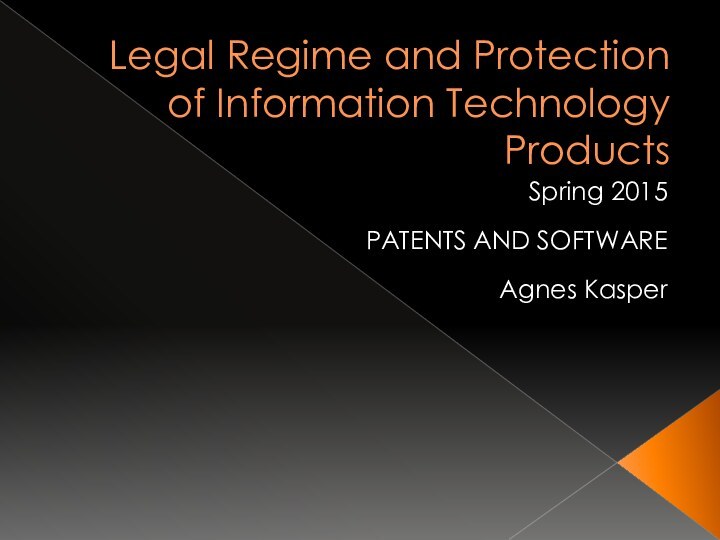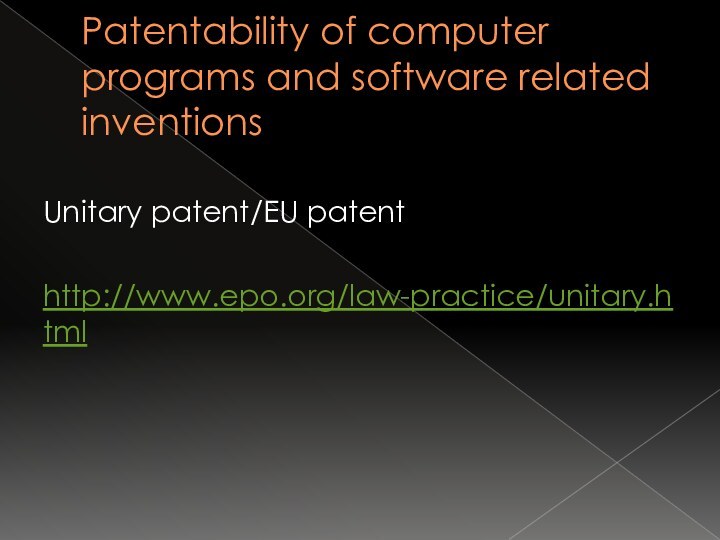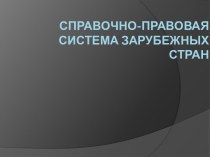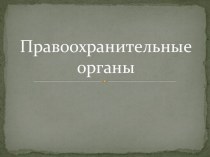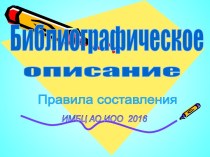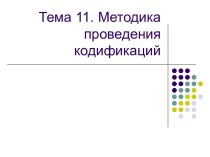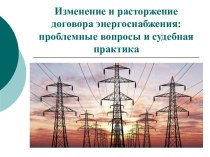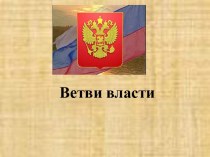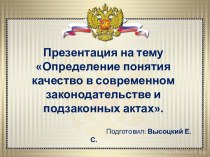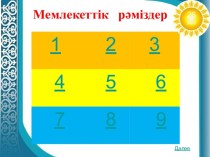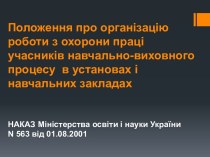Слайд 2
Material
Lloyds, Chapter 15 – Key elements of the
patent system
Lloyds, Chapter 16 – Patent and software
European Patent
Convention
There will be a quiz on the theory in March!! It will include theoretical questions about patent system and copyright. It will be closed book.
Please read the assigned material.
Слайд 3
Historical development
The patent system is the oldest from
the intellectual property protection systems and it exist from
the late Middle Ages
Point is: element of monopoly conferred on the holder of the patent has at least the potential to provide very significant economic benefit
First recorded patent in Florence, XV. century
Слайд 4
Historical development
In XVIII. Century first settled that in
return for the award of patent, the inventor should
specify the details of the invention’s functioning
Examining invention to establish the fulfilment of the novelty requirement – 1902 Patent Act, UK.
Слайд 5
Basic theory of patent system
The basic theory of

the patent system is simple and reasonable. It is
desirable in the public interest that industrial techniques should be improved. In order to encourage improvement, and to encourage the disclosure of improvements in preference to their use in secret, any person devising an improvement in a manufactured article, or in machinery or methods for making it, may upon disclosure of the improvement at the Patent Office demand to be given a monopoly in the use for a period of years. After that period it passes into the public domain; and the temporary monopoly is not objectionable, for if it had not been for the inventor who devised and disclosed the improvement nobody would have been able to use it at that or any other time, since nobody would have known about it. Furhermore, the giving of the monopoly encourages the putting into practice of the inventions, for the only way the inventor can make a profit from it (or even recover the fees for his patent) is by putting it into practice; either by using it himself, and deriving an advantage over his competitors from its use, or by allowing others to use it in return for royalties.
Слайд 6
Explanation
Please explain the basic theory of the patent
system with your own words.
Why
Who
What
When
How...
Слайд 7
Problems with software patents
Whether software developments fit conceptually
to the industrial nature of the system
Whether the library
and related resources exist to allow claim to novelty to be adequately assessed
Слайд 8
International level
Some WTO harmonization
No overarching regulatory system
Patents provide
protection only on national level in the country of
the patent
Paris Convention of 1883– establish priorities for first applicants witing all signatory states
Today number of contracting parties 174, including US, Japan, China, India, EU
Слайд 9
Patent Co-operation Treaty of 1970
– harmonizes national
systems, prescribes basic features to be enacted at national
level
National application may indicate in which other countries the protection is sought
Co-operation of national patent offices within the International Searching Authority (Austria, Australia, Japan, Russia, Sweden, Japan + EU patent office)
Слайд 10
European Patent Convention
Opened for signature in 1973
Established the
European Patent Office – Munich
Article 2 – European Patent
(1)Patents
granted under this Convention shall be called European patents.
(2)The European patent shall, in each of the Contracting States for which it is granted, have the effect of and be subject to the same conditions as a national patent granted by that State, unless this Convention provides otherwise.
Слайд 11
Requirements for patentability
Article 52 – Patentable inventions
(1) European
patents shall be granted for any inventions, in all
fields of technology, provided that they are new, involve an inventive step and are susceptible of industrial application.
(2) The following in particular shall not be regarded as inventions within the meaning of paragraph 1:
(a)discoveries, scientific theories and mathematical methods;
(b)aesthetic creations;
(c) schemes, rules and methods for performing mental acts, playing games or doing business, and programs for computers;
(d)presentations of information.
(3) Paragraph 2 shall exclude the patentability of the subject-matter or activities referred to therein only to the extent to which a European patent application or European patent relates to such subject‑matter or activities as such.
Слайд 12
???
Article 52 – Patentable inventions
(1) European patents shall
be granted for any inventions, in all fields of
technology, provided that they are new, involve an inventive step and are susceptible of industrial application.
(2) The following in particular shall not be regarded as inventions within the meaning ofparagraph 1:
(a)discoveries, scientific theories and mathematical methods;
(b)aesthetic creations;
(c) schemes, rules and methods for performing mental acts, playing games or doing business, and programs for computers;
(d)presentations of information.
(3) Paragraph 2 shall exclude the patentability of the subject-matter or activities referred to therein only to the extent to which a European patent application or European patent relates to such subject‑matter or activities as such.
Слайд 13
Exceptions
Article 53 – Exceptions to Patentability
European patents shall
not be granted in respect of:
(a)inventions the commercial
exploitation of which would be contrary to "ordre public" or morality; such exploitation shall not be deemed to be so contrary merely because it is prohibited by law or regulation in some or all of the Contracting States;
(b)plant or animal varieties or essentially biological processes for the production of plants or animals; this provision shall not apply to microbiological processes or the products thereof;
(c)methods for treatment of the human or animal body by surgery or therapy and diagnostic methods practised on the human or animal body; this provision shall not apply to products, in particular substances or compositions, for use in any of these methods.
Слайд 14
Novelty
Article 54 – Novelty
(1) An invention shall be

considered to be new if it does not form
part of the state of the art.
(2) The state of the art shall be held to comprise everything made available to the public by means of a written or oral description, by use, or in any other way, before the date of filing of the European patent application.
(3) Additionally, the content of European patent applications as filed, the dates of filing of which are prior to the date referred to in paragraph 2 and which were published on or after that date, shall be considered as comprised in the state of the art.
(4)Paragraphs 2 and 3 shall not exclude the patentability of any substance or composition, comprised in the state of the art, for use in a method referred to in Article 53(c), provided that its use for any such method is not comprised in the state of the art.
(5)Paragraphs 2 and 3 shall also not exclude the patentability of any substance or composition referred to in paragraph 4 for any specific use in a method referred to in Article 53(c), provided that such use is not comprised in the state of the art.
Слайд 15
Novelty
- The question of novelty is assessed
against the existing state of human knowledge. Account will
be taken of any material within the public domain which might indicate that the concept of the claimed invention did not originate with the particular applicant.
- Non-prejudicial disclosures – Art.55
Слайд 16
Inventive step
Article 56 – Inventive step
An invention shall
be considered as involving an inventive step if, having
regard to the state of the art, it is not obvious to a person skilled in the art. If the state of the art also includes documents within the meaning of Article 54, paragraph 3, these documents shall not be considered in deciding whether there has been an inventive step.
Слайд 17
Inventive step
Genentech Inc’s Patent – identification and mapping
of elements of DNA
Discovery, race, expenditure of time and
resources, valuable knowledge
BUT!!! No inventive step
Mythical person of “skilled in the art”:
not one person, the collective knowledge of a team of researchers might be the relevant factor
Слайд 18
Capacity for industrial application
Article 57 – Industrial application
An
invention shall be considered as susceptible of industrial application
if it can be made or used in any kind of industry, including agriculture.
In software context, the claim may often be that the equipment operating in accordance with the program’s instructions constitutes a novel product, whilst the algorithmic steps described by the implementing programs represent a novel process. Virtually any product will be capable of being sold or otherwise disposed ?satisfies the applicability step
Processes ?if the result of the application will be a product, it is likely that the process is considered capable of industrial application
Слайд 19
Process of obtaining patents
Specification and statement of claim
?too
broad vs to narrow claim
Preliminary examination
Publication
Substantive examination
Third-party involvement
Award of
patent
Слайд 20
Infringement and enforcement
Direct vs indirect infringement
4 remedies –
interdict, requiring the delivery of the infringing copies, demanding
share from the profits, demanding damages
Revocation of patent – award is not conclusive evidence of patent validity
Publication requirement in Europe vs US
Stac Electronics vs Microsoft
Слайд 21
Patentability of computer programs and software related inventions
The
development of the information society and electronic commerce offers
the European economy a genuine opportunity but also confronts it with new challenges.
The design and constant improvement of new computer programs and software is set to play a major role in the development of the information society and electronic commerce since the programs concerned have to afford swift, reliable and accurate access to the information and interactive services sought.
Слайд 22
Patentability of computer programs and software related inventions
The
Commission has already taken certain steps with a view
to setting in place legislation ensuring, throughout the Union, an adequate level of protection of innovation linked to the information society.
In November 1996 it thus adopted a communication on follow-up to the Green Paper on copyright and related rights in the information society.
Rules on copyright and related rights are essential if the information society and electronic commerce are to function properly in the European Union, since the content of most of the new services lends itself to protection by intellectual property rights.
Слайд 23
Patentability of computer programs and software related inventions
In
the European Community today, computer programs can enjoy copyright
protection as literary works but cannot be protected “as such” by patents.
The patentability of software-related inventions does not call into question the existing protection of software by copyright law. Faced with the increasing importance of software, the European Patent Office and the national patent offices of some Member States have in recent years granted thousands of patents protecting logical models composed of basic ideas and principles that constitute “technical solutions to technical problems”.
These patents were not granted for the software per se but in respect of software-related inventions consisting of hardware and specific software.
Слайд 24
Patentability of computer programs and software related inventions
At

international level, Article 27 of the TRIPs Agreement does
not rule out the patentability of computer programs, and some non-member countries do allow them to be the subject-matter of patents.
On 28 February 1996 the United States published new guidelines for examiners concerning software-related inventions: whereas a claim relating to a mathematical algorithm was accepted in the past only if a physical transformation was present, a more pragmatic approach is advocated today based on the necessary “utility” of the invention. This has the effect of broadening the scope of software-related inventions that are patentable. Software was, however, already extensively patented in the United States: a computer program carried on a tangible medium, e.g. a diskette, was patentable even before the new guidelines were published.
Japan is also examining whether the guidelines issued to examiners on this question need to be amended. On 8 August 1996 the Japanese Patent Office thus published new draft guidelines in accordance with which computer programs would not be patentable as such, but inventions would be patentable where they involved a high degree of “technological” creativeness using the laws of nature.
Слайд 25
Patentability of computer programs and software related inventions
In
the Community, interested parties have already been consulted on
these matters via the questionnaire on industrial property rights in the information society drawn up by the Commission in July 1996.
The answers received vary widely: some respondents wished to see the present balance maintained between copyright (for programs as such) and patent protection (for software-related inventions) and action limited to ensuring that the relevant provisions are applied uniformly in the different Member States; others felt, on the contrary, that the time had come to reshape the system and, in particular, to consider deleting Article 52(2) of the European Patent Convention so as to allow the patentability of computer programs as such.
Слайд 26
Patentability of computer programs and software related inventions
In
the opinion of those advocating such an approach, the
requirement that the invention be of a “technical” nature should be maintained but once such a feature was present, a program which is recorded on a medium and puts the invention into effect once it is loaded and started up would become patentable.
Given the position taken by some interested parties, who advocate deleting Article 52(2) of the European Patent Convention, the possible practical consequences of such a step need to be examined, with special reference to the simultaneous application of copyright law and patent law to the same work or invention.
Слайд 27
EPC: Computer-implemented inventions
Inventions involving programs for computers can
be protected in different forms of a "computer-implemented invention",
an expression intended to cover claims which involve computers, computer networks or other programmable apparatus whereby prima facie one or more of the features of the claimed invention are realised by means of a program or programs
Слайд 28
EPC: Computer-implemented inventions
Such claims directed at computer-implemented inventions
may e.g. take the form of a method of
operating said apparatus, the apparatus set up to execute the method, or the computer program itself as well as the physical media carrying the program, i.e. computer program product claims, such as "data carrier", "storage medium", "computer readable medium" or "signal".
Слайд 29
EPC: Computer-implemented inventions
The category of a claim directed
to a computer-implemented method is distinguished from that of
a claim directed to a computer program corresponding to that method.
Слайд 30
Technical character
Features of the computer program itself as
well as the presence of a device defined in
the claim may potentially lend technical character to the claimed subject-matter as explained below.
In particular in embedded systems, a data processing operation implemented by means of a computer program can equally be implemented by means of special circuits (e.g. by field-programmable gate arrays).
Слайд 31
Technical character
The basic patentability considerations in respect of
claims for computer programs are in principle the same
as for other subject-matter. While "programs for computers" are included among the items listed in Art. 52(2), if the claimed subject-matter has a technical character it is not excluded from patentability by the provisions of Art. 52(2) and (3).
Слайд 32
Technical character
A computer program claimed by itself is
not excluded from patentability if it is capable of
bringing about, when running on or loaded into a computer, a further technical effect going beyond the "normal" physical interactions between the program (software) and the computer (hardware) on which it is run.
The normal physical effects of the execution of a program, e.g. electrical currents, are not in themselves sufficient to lend a computer program technical character, and a further technical effect is needed. The further technical effect may be known in the prior art.
Слайд 33
Technical character
Likewise, although it may be said that
all computer programming involves technical considerations since it is
concerned with defining a method which can be carried out by a machine, that in itself is not enough to demonstrate that the program which results from the programming has technical character; the programmer must have had technical considerations beyond "merely" finding a computer algorithm to carry out some procedure.
Слайд 34
Technical character
A further technical effect which lends technical
character to a computer program may be found e.g.
in the control of an industrial process or in the internal functioning of the computer itself or its interfaces under the influence of the program and could, for example, affect the efficiency or security of a process, the management of computer resources required or the rate of data transfer in a communication link.
The processing of data which represents physical entities (such as an image stored as an electric signal), resulting in a change in those entities, also denotes a further technical effect.
Слайд 35
Technical character
Whether a computer program can contribute to
the technical character of the claimed subject-matter is frequently
an issue separate and distinct from the technical character of the hardware components which may be defined in order to execute the computer program.
Слайд 36
Technical character
When a computer program produces a further
technical effect, it is by itself considered technical and
not excluded. In contrast, any claimed subject-matter defining or using technical means is an invention within the meaning of Art. 52(1)
This applies even if the technical means are commonly known; for example, the inclusion of a computer, a computer network, a readable medium carrying a program, etc. in a claim lends technical character to the claimed subject-matter.
Слайд 37
Technical character
If claimed subject-matter relating to a computer
program does not have a technical character, it should
be rejected under Art. 52(2) and (3).
If the subject-matter passes this test for technicality, the examiner then proceeds to the questions of novelty and inventive step
Слайд 38
Patentability of computer programs and software related inventions
VICOM
SYSTEMS CASE: EPO T 0208/84 (1986): Vicom
A pathbreaking decision
of the European Patent Office's Technical Board of Appeal, which states that a solution for faster processing of image data is patentable even when it resides in a computer program.
The Vicom case is the leading authority on the meaning of "computer program as such" and what constitutes a "mathematical method".
Слайд 39
The patent application related to a method and
apparatus for digital image processing which involved a mathematical
calculation carried out on a two dimensional array of numbers representing points of an image. Algorithms were used for smoothing or sharpening the contrast between neighbouring data elements in the array.
The initial claim format of "A method of digitally filtering data including scanning a data array with masks..." was disallowed because the physical entity represented by the data was not mentioned in the claim at all.
The EPO Examiner considered this left the claims with an abstract notion indistinguishable from a mathematical method.
Слайд 40
On appeal, the Technical Board of Appeal at
the EPO accepted an amended claim which defined the
actual technical activity performed by the digital filtering.
The allowed language was "A Method of digitally processing images in the form of a 2D array having ...". The Board of Appeal felt this language defined a "real-world" application.
This is a very significant decision: although much of the patent includes a mathematical description, the EPO accepted claim language to render the claim patentable within the EPC statute.
Слайд 41
The Board held that what is decisive in
determining patentability is determining what technical contribution the claimed
invention when considered as a whole makes to the known art. It is irrelevant whether the computer program takes the form of software or firmware.
The Board held that even if the idea underlying an invention is based upon a mathematical method, a claim directed to a technical process in which the method is used is not a claim which seeks protection for the mathematical method as such.
Слайд 42
The Board held that the invention had a
technical character, recognizing that signal processing can be expressed
in terms of a mathematical operation.
The result, unlike that of a mathematical process, was not merely numbers.
The signal processing is carried out on a physical entity (the image stored as an electrical signal) by a technical means implementing the method.
The method results in a change in the entity.
Слайд 43
Using similar reasoning as with respect to mathematical
methods, the Technical Board of Appeal in the Vicom
case held that a claim directed to a technical process which is carried out under the control of a computer program (implemented in hardware or software) is not a claim to a computer program as such.
Instead, it is the application of the program in a process; protection being sought for the process:
Слайд 44
"... a claim directed to a technical process
which process is carried out under control of a
program (be this implemented in hardware or in software), cannot be regarded as relating to a computer program as such ... it is the application of the program for determining the sequence of steps in the process for which in effect protection is sought."
Слайд 45
Vicom Systems case: KEY DOCTRINES
Even if the idea
underlying an invention may be considered to reside in
a mathematical method a claim directed to a technical process in which the method is used does not seek protection for the mathematical method as such.
A computer of known type set up to operate according to a new program cannot be considered as forming part of the state of the art as defined by Article 54(2) EPC.
A claim directed to a technical process which process is carried out under the control of a program (whether by means of hardware or software), cannot be regarded as relating to a computer program as such.
A claim which can be considered as being directed to a computer set up to operate in accordance with a specified program (whether by means of hardware or software) for controlling or carrying out a technical process cannot be regarded as relating to a computer program as such.
Слайд 46
VICOM CASE’S IMPORTANCE:
AN INVENTION WHICH WOULD BE
PATENTABLE IN ACCORDANCE WITH CONVENTIONAL PATENTABILITY CRITERIA SHOULD NOT
BE EXCLUDED FROM PROTECTION BY THE MERE FACT THAT FOR ITS IMPLEMENTATION MODERN TECHNICAL MEANS IN THE FORM OF COMUTER PROGRM ARE USED. DECISIVE IS WHAT TECHNICAL CONTRIBUTION THE INVENTION AS DEFINED IN THE CLAIM WHEN CONSIDERED AS A WHOLE MAKES TI THE KNOWN ART.
Слайд 47
Patentability of computer programs and software related inventions
MERRILL
LYNCH CASE IMPORTANCE:
Developed a data processing system for making
a trading market in securities and for executing orders for securities transactions.
INVENTION COULD BE PATENTABLE WHERE THE NOVEL OR INVENTIVE ELEMENTS LAY ENTIRELY IN A COMPUTER PROGRAM
BUT!!!
The refusal was upheld on other grounds: “it is a data processing system for doing a specific business, that is to say making a trading market in securities. The end result, therefore, is simply a method of doing business, and is excluded by legislation. A data processing system operating to produce a novel technical result would be patentable. But it cannot be patentable if the result itself is a prohibited item under section 1 (2). “
Слайд 48
Patentability of computer programs and software related inventions
When
is a program more than a program?
It is difficult
to identify tangible elements as resulting from the operation of the program.
IBM/Homphone checker case:
Novel method for correcting homphone errors in documents, important feature of speech recognition systems ? not patentable (mental act)
Appeal decision reasoning:
Since the only conceivable use for a computer program is the running of it on a computer, the exclusion from patentability of programs for computers would be effectively undermined if it could be circumvented by including in the claim a reference to conventional hardware features, such as processor, memory, keyboard and display, which in practice are indispensable if the program is to be used at all. In the opinion of the Board, in such cases, patentability depends on whether the operations performed involve an inventive step in a field not excluded from patentability.
Слайд 49
Patentability of computer programs and software related inventions
BUT!!
IBM/Data
Processor Network case
Interconnection of a series of computers in
such a manner as to facilitate communications between programs and data held in the various computers ? patentable
Appeal decision reasoning: an invention relating to the coordination and control of the internal communication between programs and data files held at different processors in a data processing system ...and the features of which are not concerned with the nature of the data and the way in which a particular application program operates on them, is to be regarded as solving a problem which is essentially technical.
Слайд 50
Patentability of computer programs and software related inventions
Microsoft
case
New form of clipboard operation ?enable data held in
one format to be copied into another application using a different format (for example graphic into text)
Examiner rejected on grounds of lack of novelty and inventiveness
Слайд 51
Patentability of computer programs and software related inventions
Appeal

decision reasoning:
Inventiveness ? In T 258/03 – Auction method/Hitachi
it was stated that a method using technical means is an invention within the meaning of Art. 51(1)EPC. A computer system including a memory (clipboard) is a technical means, an consequently the claimed method has technical character.
The method implemented in a computer system represents a sequence of steps actually performed and achieving an effect, and NOT a sequence of computer-executable instructions which just have the potential of achieving such an effect when loaded into, and run on, a computer.
The claim category of a computer-implemented method is distinguished from that of a computer program. Even though a method of operating a computer may be put into practice with the help of a computer program, a claim relating to such method does not claim a computer program in the category of a computer program.
Novelty ? previous version of Windows (Windows 3.1) constituted the most relevant prior art. Compared to the features found in this, the new clipboard was considered novel.
Слайд 52
Patentability of computer programs and software related inventions
Four-stage
test:
Properly construe the claim: this is a basic step
for any patent application and requires identification of the nature and scope of the subject matter of the patent and the extent of the monopoly which is sought.
Identify the actual contribution: this involves an assessment of the problem which the applicant claims to have solved, the manner in which the invention works and the advantages which it claims to offer over existing technologies.
Ask whether it falls solely within the excluded subject matter: inventions containing excluded subject-matter are ineligible for patent protection only to the extent that they contain nothing more than excluded subject-matter.
Check whether the actual or alleged contribution is actually technical in nature: in many cases the answer to this question would be obvious from that of the previous one.
Слайд 53
The current Guidelines and Board of Appeal decisions
provide the basic rules for Examiners requiring to exclude
the following computer-related inventions are excluded from protection:
a computer program claimed by itself;
a computer program stored on a disk or other carrier irrespective of content;
but that the following may be patentable:
a program-controlled machine or manufacturing and control processes;
program controlled internal working of a known computer (operating systems).
It is reiterated that if the claimed subject matter makes a technical contribution to the known art, patentability should not be denied because a computer program is involved in the implementation.
http://www.epo.org/law-practice/legal-texts/guidelines.html
